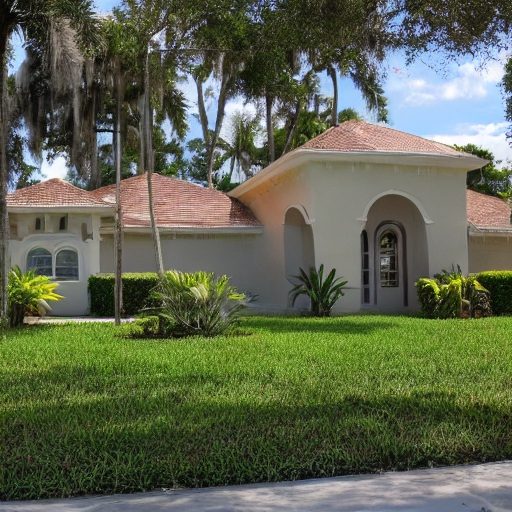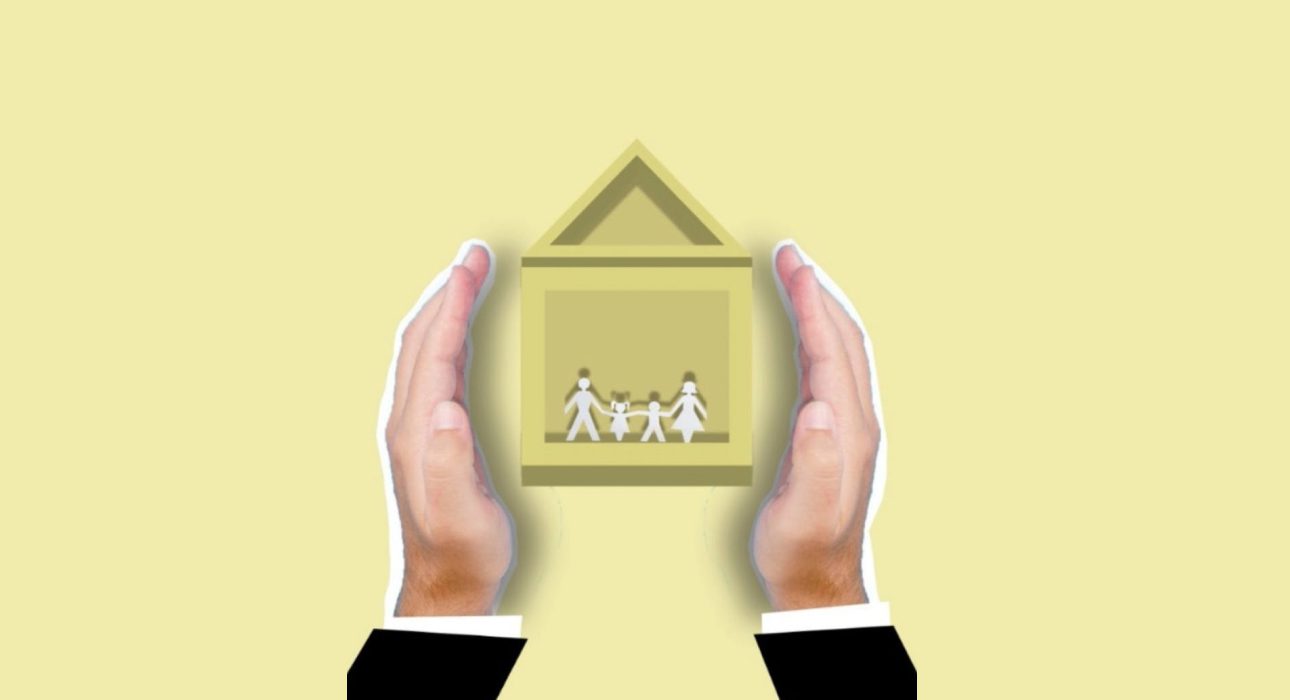
Get the Best Results with Richr: The Top Discount Real Estate Broker in Florida
Are you looking to buy or sell a property, but…
February 2, 2023
HOW DOES A MORTGAGE LOAN WORK?
WHAT IS A REVERSE MORTGAGE LOAN?
HOW DOES A REVERSE MORTGAGE LOAN WORK?
WHAT IS A SECOND MORTGAGE LOAN?
WHAT IS A CONVENTIONAL MORTGAGE LOAN?
WHY DO MORTGAGE LOAN COMPANIES SELL LOANS?
HOW LONG DOES IT TAKE TO GET A MORTGAGE?
WHAT IS THE DIFFERENCE BETWEEN A BUSINESS LOAN AND A MORTGAGE?
One of the most important decisions you will ever make in your life is to take up a home mortgage loan. There are different types of mortgage loans, and each loan attracts different kinds of rates. In addition to that, there are other conditions and terms attached to mortgage loans you should know about. The information you have about mortgage loan rates and their features, the better placed you will be to make informed decisions about the types of home loans to take and the ones to avoid.
To help you out, we review the essential details about mortgage loans for homebuyers and all you need to know about them.
A mortgage loan is a loan issued to a borrower to buy a home or to refinance the purchase of a loan. Personal mortgages are issued by mortgage lenders to individuals who qualify for them. To secure a loan of this type, there are several eligibility criteria the borrower must meet.
In addition to that, the borrower must put forward a down payment upfront before the loan can be issued. Down payments depend on the lender’s conditions, but most lenders insist on down payments that are between 10%-20% of the home’s value.
It’s time to buy smarter. Richr gives you cash back helping you buy the home of your dreams.
Unlike other types of loans, house loans follow very strict criteria, and not everyone qualifies for them. In fact, a significant number of people who apply for them have their applications rejected.
Most people who finance the purchase or building of a house rely on mortgages to do that because of the high cost of acquiring a home. Hence, applying for a mortgage is necessary if you cannot afford to pay the total price for a house. Only those who qualify for the stringent conditions can apply for any home loan options on offer.
As a general rule, a person looking to qualify for a mortgage loan must
Now that you know about some of the eligibility requirements that qualify a borrower for a mortgage loan, the next thing is to understand how a house loan really works. For starters, once a mortgage loan is issued to you, you are not expected to pay the full value of the loan at once. Instead, the mortgage will be paid back in installments. In most cases, it is split into four tranches, namely
Here is how they work.
The principal is the amount of money issued by the mortgage loan company to you, the borrower. For instance, if the amount issued to you is $500,000, the principal amount is the $500,000 you received. Therefore, the principal amount is the actual loan amount
The interest rate is the amount charged on the loan. Just like the principal, this amount is not to be paid immediately. Rather, it is broken down into installments that will be paid every month all through the loan tenure.
Although there are different types of mortgage loans, you need to know that these loans attract property taxes. In general, a property loan attracts 1/12 of the annual property tax every month. This tax is calculated based on the property assessment of assets in the location.
Another payment that the home mortgage loan will attract is insurance. In the mortgage loan industry, lenders require homebuyers to pay an insurance premium to protect the asset against environmental hazards like fire, burglary, or any accidents.
In the general payment breakdown, the early years of the mortgage will attract a more significant percentage of the interest payments. Later on, after the payment of all the interest, the payment schedule will switch to the payment of the principal amount. The lender will draft the amortization payment schedule, which will become effective after signing the loan contract.
There are different types of mortgage loans for first-time homebuyers, but a reverse mortgage loan is not suited for first-time homebuyers. Just in case you did not know, a reverse mortgage loan is the opposite of a forward home loan. A reverse mortgage loan is a type of loan that is only due after the borrower sells the home, relocates permanently, or dies. During the course of the tenure, the owner of the property who took up the mortgage does not pay the entire loan balance.
Based on federal regulations, lenders are expected to structure the payment of the loan amount in such a way that the full value of the property does not exceed the actual value of the loan. Therefore, if there is a difference between the loan amount and the home’s current home value, the borrower is not liable to pay the difference.
A Reverse mortgage loan does not work like a conventional home loan. For a reverse mortgage loan, the homebuyer does not make payment to the mortgage company. Rather, it is the mortgage loan company that makes payment to the owner. This is why it is called a Reverse mortgage loan.
The homebuyer decides how the payment will be structured and only pays interest on the amount he received. Also, the interest is rolled into the loan, and the homeowner keeps the title documents for the property over the course of the loan tenure. So, in essence, over the course of the loan tenure, the equity of the home decreases while the debt increases.
When the loan tenure expires, the proceeds of the home sale go to the lender. If the selling price exceeds the full amount, the excess amount is returned to the previous owner or heir. In some cases, the heirs may choose to pay up the full loan amount in order to keep the home.
What is the mortgage loan process to take to get a mortgage loan as a homebuyer? Below, we review the entire process but do note that this process is not cast in stone. The process may change depending on the lender in question.
The first step to take is to get a mortgage Pre-approval. A pre-approval is simply enquiring whether the lender is willing to give you the loan for the home. When you approach a lender for a pre-approval, the lender will evaluate your income status, credit report, and your existing asset. If you qualify for a mortgage loan, they will inform you how much you are eligible for. In addition, they will also inform you how much interest the loan will attract should you sign off on it. However, you need to understand that a mortgage Pre-approval is different from a pre-qualification. Pre-qualification is not really rated because the lender will not evaluate your assets and income status, but with a pre-approval, they do.
Getting a pre-approval can also be done even if you don’t have a property you are ready to buy. With a pre-approval, you become an attractive buyer to sellers and real estate agents.
The next step is to check your credit score. The lender will evaluate your credit rating during the pre-approval stage. This information can be gleaned from your credit report. After they have verified your credit status, the different home loan options you qualify for will be presented to you to make your choice. You will also be furnished with other important information such as the interest payments and the likes.
Once you pick a home loan option that suits your needs, the lender will send you a pre-qualified approval letter. At this stage, you are in the clear, and you can go ahead to go home hunting.
Once you have found a home, you can then make an offer through a real estate agent or directly to the seller. If the offer is accepted, you can then move on to the next stage.
The lender will send an underwriter to evaluate the home to ensure that it is worth its value. All this requires paperwork which has to be verified. This process is called a home appraisal process.
Once the property documents have been reviewed and the value of the home appraised, you can then go-ahead to close the process. The lender will ask for your personal documents and present you with a loan contract. After signing it, the value of the loan will be paid to the seller, and you immediately become an official homeowner.
Another thing you need to know about is a second mortgage. Second mortgages are not as common as traditional mortgages, but they are still in demand. These mortgages are called junior liens and are issued in addition to a primary mortgage. Second mortgages can be issued at any stage of the loan tenure. They can also be structured as a single payment mortgage or what is called a piggyback second mortgage.
Like we stated at the start of this article, we pointed out that there are different types of mortgage loans. Another type you should know about is called a conventional mortgage loan. A conventional mortgage loan is different from a second mortgage loan. Conventional mortgages are not backed by the government or any of its agencies. Instead, they are broken down into two groups called conforming and non-conforming loans. These types of loans are issued by mortgage companies on their own accord.
Mortgage modification is a process where the terms of the mortgage contract are modified in light of emerging changes. When a home loan contract is signed, original terms are agreed upon between lender and borrower. However, in a situation where changes have to be made to the initial terms as previously agreed by both parties. A mortgage loan modification is also called debt rescheduling.
Subprime mortgage loans are issued to borrowers who do not qualify for a conventional mortgage due to low credit ratings. Unfortunately, many borrowers do not qualify for loans because they have low credit scores caused by mounting debt or low income, or a combination of both.
In order to give people in this category the opportunity to become homeowners themselves, lenders issue a special type of loan called subprime loans, albeit with a much higher interest rate. This is because they carry many risks with the potential for the borrower to default on the repayment.
In some cases, lenders sell their loans to other institutions for two reasons. The first reason for this is to raise liquidity at short notice. The second reason is to generate cash so they sell the loan to another Lender while retaining the right to keep servicing the loan.
Getting a mortgage takes time, and there is no strict timeline. It can take between 3 days to a week or more to complete the process. As for the finalization of the process, it may take up to 30 days, counting from when you submit the application. If you want the process to be completed as quickly as possible, you must submit the proper documents to avoid delays.
To conclude this article, let us differentiate between a business loan and a mortgage. While it is true that a mortgage is also a loan, there are certain differences. Here are the main differences between a loan and a mortgage.
Mortgage | Business Loan |
A mortgage is a loan issued for the purpose of buying a house. The loan cannot be used for any other purpose | Business loans are issued by the lender but how the proceeds of the loan is spent is at the prerogative of the borrower. |
The collateral for a mortgage is the property itself. If the homeowner is not able to repay the loan, the house will be taken over by the lender to cover the loan | The collateral for business loan varies depending on what the lender is asking for. It may be a landed property or any other valuable asset |
The downpayment for a mortgage ranges between 10%-20% of the value of the property | Business loans require no downpayments |
The loan tenure ranges between 5-30 years | Business loans are short/medium or long-term loans. They range between 1-5 years. Some lenders may choose to extend the loan tenure for much longer. |
If you’re looking to buy or sell a house and would like to discuss your option, Richr can help you!
Our fully licensed Concierge Team is here to answer questions and provide free, objective advice on how to get the best outcome with your sale or purchase.

If you want the Richr team to help you save thousands on your home just book a call.
 Book a call
Book a call